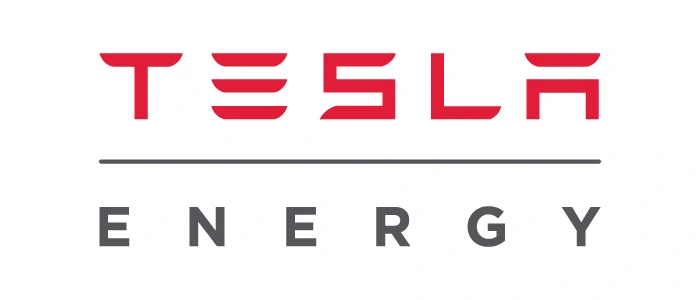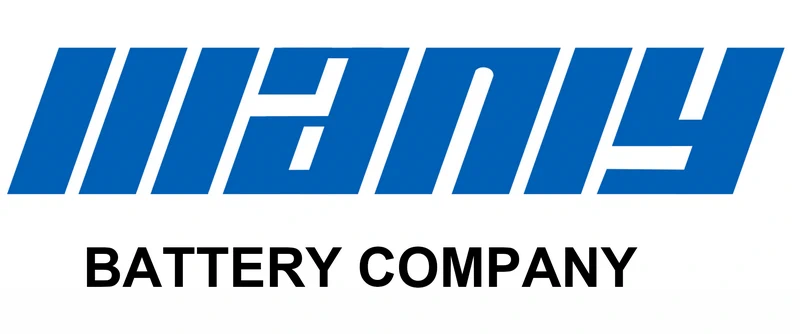2025 Which Solar Battery Is The Best In South Africa
Table of Contents
- 2025 Which Solar Battery Is The Best In South Africa
- Why Solar Battery Storage Matters for South African Homes
- 8 Best Solar Battery For Home Battery Backup In South Africa
- MANLY 15kWh LiFePO₄ Battery – Scalable Backup Power for Solar Homes
- BYD Battery-Box Premium LVL 15.4 – Scalable Storage from a Global Leader
- Tesla Powerwall (13.5kWh) – Smart, Sleek, and Solar-Ready
- Freedom Won LiTE Home 15/12 – A South African-Built Powerhouse for Residential Backup
- Pylontech US3000C & US5000 – Scalable and Budget-Friendly Modular Batteries
- Hubble Lithium AM Series – Locally Engineered Solar Storage You Can Count On
- Dyness BX51100 & Modular Series – Scalable Chinese Lithium Storage with Smart Safety
- Solar MD SS4143 & 7.4 kWh – Premium Home Battery Backup from a South African Innovator
- How to Size a Solar Battery for Your Home Backup Needs
- 1. What Do You Need to Power—and For How Long?
- 2. Do You Want Full or Partial Backup?
- 3. Do You Have Solar Panels? Use Excess Production Smartly
- 4. Peak Power vs. Energy Capacity—Don’t Confuse the Two
- 5. How Much Autonomy Do You Need?
- 6. Example Scenario: Sizing for Load-Shedding & Evening Use
- 7. For Larger Homes, Sizing Up Makes Sense
- 8. DoD Strategy: Oversize for Better Battery Health
- Conclusion
- FAQ
- Learn More About Battery
In South Africa, where power outages and load-shedding are part of everyday life, having a solar battery system at home is no longer a luxury—it’s a necessity. While rooftop solar panels help reduce grid dependence, they can’t provide energy when the sun goes down or the power cuts out. That’s where solar battery storage steps in, giving homeowners the ability to store excess solar energy and use it when it matters most. Whether you’re looking to protect your home from blackouts, lower your electricity bill, or move closer to energy independence, this guide will help you explore the best solar battery options and understand how to size one for your needs.
Why Solar Battery Storage Matters for South African Homes
South Africa’s ongoing power instability, paired with its high solar potential, has made solar battery storage a smart investment for residential energy resilience. With scheduled load-shedding becoming part of daily life, homeowners are increasingly turning to batteries that can store surplus energy during the day and release it at night or during outages.
By installing a solar battery, households can dramatically cut back on their reliance on the national grid. These systems collect and store extra electricity from rooftop solar panels or even from the grid during low-cost off-peak hours. You can then use that energy to keep essentials like refrigerators, routers, and lighting running—even when the grid goes down.
Modern solar battery storage systems are more than just backup—they’re the foundation for energy independence. Most integrate seamlessly with inverters and solar charge controllers, forming either fully off-grid solutions or hybrid backup systems. That means you don’t just store energy—you control how and when it’s used.
For South African households, the payoff is twofold: uninterrupted power and long-term savings. Using stored solar energy during peak tariff periods helps reduce electricity bills. And during blackouts, it ensures that your daily life isn’t interrupted.
Thanks to the growing demand, homeowners now have a wide range of choices—from local solar battery storage manufacturers to international solutions produced by advanced battery factories in China. But not all batteries are created equal. Making the right choice requires understanding your home’s energy usage, knowing which technologies offer the best cycle life and safety, and comparing real-world performance across brands.
8 Best Solar Battery For Home Battery Backup In South Africa
Choosing the right solar battery can make all the difference during South Africa’s frequent load-shedding. Whether you’re looking for full home battery backup or just need to power essential circuits, these top-rated systems from trusted battery manufacturers and solar battery storage manufacturers offer reliable performance, safety, and long-term value.
MANLY 15kWh LiFePO₄ Battery – Scalable Backup Power for Solar Homes
The MANLY MF15000 is a robust solar battery built to meet the growing energy demands of modern homes in regions like South Africa, where power outages are frequent and solar energy is abundant. Engineered with lithium iron phosphate (LiFePO₄) cells and backed by a smart battery management system (BMS), this 15kWh unit delivers high safety, long life, and seamless integration into both grid-tied and off-grid systems.
Its 51.2V, 300Ah capacity provides a reliable power source for day-to-night energy storage, while the unit’s wall-mount design keeps the installation tidy and compact. Designed by a leading battery factory in China, MANLY’s solution is an ideal choice for solar homeowners seeking performance, safety, and long-term value.
Key Features
- High Storage Capacity: 15kWh of usable energy, perfect for medium to large homes with solar panels.
- Long Cycle Life: Over 6,000 cycles, translating to 10–15 years of daily use.
- Advanced Safety Systems: Includes built-in protections for overcharge, over-discharge, and short circuits.
- Smart BMS Control: Each cell remains balanced for consistent performance and extended battery health.
- Parallel-Ready Design: Easily expandable—connect up to 8 units for higher capacity in off-grid or hybrid systems.
- High Discharge Rate: Delivers a continuous 100A (approx. 5kW), with burst capability for heavy appliance startup.
- Wide Temperature Range: Operates from -4°F to 167°F (-20°C to 75°C), suitable for harsh climates.
- Real-Time Monitoring: Equipped with LCD display and RS485/RS232/CAN communication for system integration.
- Certified Quality: Meets global safety standards with UN38.3, IEC62133, UL, and CE certifications.
- OEM-Ready for Bulk Orders: Designed for resellers, installers, and solar battery storage manufacturers looking to offer a high-quality option in local markets.

BYD Battery-Box Premium LVL 15.4 – Scalable Storage from a Global Leader
The BYD Battery-Box Premium LVL 15.4 is a heavy-duty solar battery solution designed for both residential and light commercial use. With a usable capacity of 15.36 kWh and a modular, low-voltage design (48V), it’s well-suited for homeowners who require powerful backup capabilities or want to future-proof their energy system. BYD, a globally recognized name among solar battery storage manufacturers, brings its electric vehicle expertise to home energy storage with this lithium iron phosphate (LiFePO₄) unit.
Key Features
- High-Capacity Output: Delivers up to 250A continuous (≈12kW), with 375A peak for heavy load spikes.
- Safe Chemistry: Uses cobalt-free LiFePO₄ cells for added safety and thermal stability.
- Long Life Guarantee: Rated for 6,000+ cycles and backed by a 10-year warranty.
- Modular Expansion: Supports parallel connection of up to 64 units—ideal for future expansion.
- Wide Compatibility: Works with major hybrid inverters including Victron, GoodWe, Deye, and Sunsynk.
- Reliable in Harsh Environments: Operates from -10°C to +50°C; IP20 cabinet design for indoor installs.
- Large but Stable Build: Weighs 164 kg and stands solidly for fixed applications.
- Flexible Applications: Supports both on-grid with backup and full off-grid systems.

Tesla Powerwall (13.5kWh) – Smart, Sleek, and Solar-Ready
The Tesla Powerwall remains one of the most recognizable solar battery systems globally, offering sleek design, intelligent controls, and deep integration with solar. With a usable capacity of 13.5kWh, the Powerwall series—now including both Powerwall 2 and the newer Powerwall 3—gives homeowners a premium energy storage option. Tesla’s commitment to innovation and reliability has made the Powerwall a top choice in both the U.S. and emerging markets like South Africa.
Key Features
- Integrated Energy System: Powerwall 2 includes a built-in battery inverter; Powerwall 3 also integrates a 12kW solar inverter.
- Full Depth of Discharge: Supports 100% usable capacity, allowing total system optimization.
- Smart Energy Management: Includes Time-Based Control and Storm Watch for dynamic charging behavior.
- High Output Power: Powerwall 2 delivers 5kW continuous (7kW peak); Powerwall 3 supports up to 11kW continuous.
- Outdoor Durability: IP67 waterproof rating; functions from -20°C to 50°C, even in extreme weather.
- Expandable System: Stack up to 10 Powerwall 2 units or 4 Powerwall 3 units for higher energy demand.
- Advanced Software Integration: Works with Tesla’s mobile app for live monitoring and control.
- Long-Term Investment: Comes with a 10-year warranty with unlimited cycles, highlighting long lifespan and reliability.

Freedom Won LiTE Home 15/12 – A South African-Built Powerhouse for Residential Backup
Designed and manufactured in South Africa, the Freedom Won LiTE Home 15/12 offers a strong local alternative to imported solar battery systems. With a total capacity of 15 kWh and a usable energy reserve of 12 kWh (80% DoD), this wall- or floor-mounted lithium iron phosphate (LiFePO₄) battery is built for serious residential backup or hybrid solar setups. It delivers industrial-grade performance and durability while supporting the local economy—a compelling factor for homeowners prioritizing both reliability and regional sourcing.
Key Features
- Strong Output Capacity: Delivers up to 200A continuous (≈10 kW) and 300A peak (≈15 kW), making it ideal for heavy loads.
- Extended Cycle Life: Warranted for 4,000 cycles at 80% DoD, with real-world life expectancy beyond 5,500 cycles.
- Advanced Safety Systems: Includes over/under-voltage protection, current protection, and a built-in circuit breaker.
- Smart BMS Integration: Handles cell balancing and communicates with inverters via CAN bus for seamless control.
- Flexible Installation: Can be securely mounted on the floor or reinforced wall brackets; weighs approx. 130 kg.
- Real-Time Monitoring: Front-facing state-of-charge display allows for quick visual status checks.
- Compatible with Top Inverters: Easily pairs with popular brands like Victron, Sunsynk, and Deye.
- Locally Supported: Strong after-sales service and warranty support from within South Africa.

Pylontech US3000C & US5000 – Scalable and Budget-Friendly Modular Batteries
For homeowners looking for flexibility and affordability, Pylontech offers modular solar battery solutions that can grow with your energy needs. As one of the most recognized solar battery storage manufacturers globally, this China-based brand supplies LiFePO₄ modules that come in compact, rack-mountable form factors. Their two most popular models in South Africa are the US3000C (3.5 kWh usable) and US5000 (4.8 kWh usable), each built to interface easily with standard 48V inverter systems.
Key Features
- Modular Scalability: Start small and expand as needed—stack up to 8–16 modules depending on inverter compatibility.
- Safe and Long-Lasting: Built-in BMS with 6000+ cycle lifespan at 95% DoD.
- Efficient Design: Slim form factor fits in standard cabinets or wall-mounted racks; lightweight and space-efficient.
- Smart Communication: Integrated CAN/RS485 ports ensure smooth syncing with hybrid inverters like Victron, GoodWe, and Deye.
- High Output for Each Module:
US3000C: Rated up to 74A continuous (~3.5 kW).
US5000: Handles up to 100A (~5 kW), making two modules sufficient for 10 kWh and 10 kW output.
- Flexible Cost Control: Add modules over time to increase capacity without replacing your whole setup.
- LED Indicators: State-of-charge lights make system monitoring quick and easy.

Hubble Lithium AM Series – Locally Engineered Solar Storage You Can Count On
Hubble Lithium is a South African battery manufacturer offering modular LiFePO₄ energy storage solutions built for residential and small business use. Their AM series—particularly the AM-2 and AM-5 models—have gained a strong local following for their reliability, scalability, and affordability. Whether you’re backing up your home during load-shedding or storing solar power for nighttime use, Hubble offers a compelling alternative to imported brands.
Key Features
Solid Energy Storage:
AM-2: 5.5 kWh (116Ah, 51.2V)
AM-5: 5.12 kWh (100Ah, 51.2V)
- Powerful Output: 100A continuous discharge (≈5 kW), ideal for medium household loads.
- Long Design Life: Rated for 6,000+ cycles at 80% DoD, with a projected 15-year service life.
- Smart BMS: Built-in battery management system ensures voltage, temperature, and current protection.
- Inverter Compatibility: Seamlessly integrates with Victron, Deye, Sunsynk, Kodak, and other hybrid inverters via CAN bus.
- Plug-and-Play Ready: Supports Bluetooth monitoring (on select models) and can scale up to 15 units in parallel.
- Compact & Flexible Install: Wall-mountable or rack-mountable design, great for tight spaces.
- Real-Time Monitoring: Optional mobile app lets users track cell balance, voltage, and cycle count wirelessly.
- Local Advantage: Faster support, simpler warranty process, and direct access to replacement parts.

Dyness BX51100 & Modular Series – Scalable Chinese Lithium Storage with Smart Safety
Dyness, a prominent solar battery storage manufacturer based in China, offers modular LFP batteries that compete directly with brands like Pylontech and Hubble. Their BX51100 (5.12 kWh, 51.2V) is one of the most widely adopted models in South Africa, especially for homes that want reliable storage with flexible expandability. Dyness modules are known for clean design, good inverter compatibility, and strong protection features.
Key Features
- Reliable Capacity: 5.12 kWh per module with 100A continuous output (≈5 kW).
- Safe LiFePO₄ Chemistry: Cobalt-free cells with high thermal and chemical stability.
- Built for Durability: Rated for 6,000+ cycles at 80% DoD; 10-year warranty standard.
- Parallel Ready: Connect up to 8 or 16 modules depending on the system, reaching 40+ kWh total.
- Smart Monitoring: Advanced BMS offers real-time management of voltage, current, and temperature.
- Self-Balancing Feature: Ensures optimized charge/discharge among all cells.
- Display Panel: Onboard SoC (State of Charge) display for visual energy tracking.
- Heat-Resistant Design: Built to perform in high-temperature conditions—ideal for African climates.
- Inverter Compatibility: Supports most major hybrid inverter brands, including GoodWe, Deye, and Victron.

Solar MD SS4143 & 7.4 kWh – Premium Home Battery Backup from a South African Innovator
Solar MD is a Cape Town–based battery manufacturer offering high-performance lithium energy storage solutions engineered for the local grid conditions and climate. Known for their advanced integration and system intelligence, Solar MD delivers solar battery solutions ideal for both upscale residential and commercial installations. Their most popular models include a 7.4 kWh module and a scalable 14.3 kWh cabinet system (model SS4143), both designed for seamless hybrid solar operation.
Unlike many imported batteries, Solar MD products are locally assembled and supported, giving South African homeowners and installers fast access to technical service, firmware updates, and remote diagnostics. Their LiFePO₄ (LFP) chemistry ensures excellent safety and longevity, while their proprietary monitoring portal makes it easy to manage systems remotely—perfect for professional fleet management or data-driven home setups.
Key Features
Flexible Capacity Options:
7.4 kWh model for moderate storage needs.
SS4143 (14.3 kWh) for larger homes or light commercial setups.
- Scalable System: Combine multiple units (e.g., 2 × 14.3 kWh for ~28.6 kWh) to expand storage.
- High Output Capability: Each module can deliver ~5 kW; parallel setups provide even more sustained power.
- Long Cycle Life: Over 5,000 cycles at 80% DoD, backed by a 10-year warranty.
- Smart Battery Management: Integrated BMS handles cell balancing, protection, and performance optimization.
- Cloud-Based Monitoring: Real-time performance tracking via online portal—ideal for professional monitoring or long-distance troubleshooting.
- Installer-Friendly Design: Pre-cabled cabinet systems simplify on-site installation and reduce wiring complexity.
- Hybrid Inverter Compatibility: Certified to work with Victron, Kodak, and other popular hybrid inverter platforms.
- Built for Local Conditions: Engineered to operate reliably under African temperatures, grid volatility, and long backup cycles.
- Proudly South African: Faster service, better firmware support, and reliable local warranty processing.
How to Size a Solar Battery for Your Home Backup Needs
Choosing the right solar battery size for your home is more than just picking a number—it’s about matching your energy habits, essential appliances, and backup expectations. Whether you’re preparing for rolling blackouts or simply want to optimize solar energy usage at night, the battery size you select will directly impact performance, cost, and long-term satisfaction.
This guide walks you through how to calculate the best battery size for your specific needs, whether you’re considering a basic home battery backup or a full solar-plus-storage setup.
1. What Do You Need to Power—and For How Long?
Start by listing the devices you want to run during an outage or at night. For example:
- Refrigerator: 150W
- Wi-Fi and lights: 50W
- TV and laptop: 100W
- Fan: 50W
Total: ~350W
To run that load for 10 hours, you need 3.5 kWh of stored energy. If you want to add a microwave or electric kettle, note that these draw high power briefly, so they impact power output needs more than energy storage.
Rule of thumb:
- 5 kWh battery = good for essentials for a few hours.
- 10–15 kWh battery = covers overnight use and adds comfort appliances.
2. Do You Want Full or Partial Backup?
- Full backup supports nearly all household circuits (except major energy hogs like electric stoves). You’ll likely need 10–20 kWh depending on the home’s size and power usage.
- Partial backup focuses only on critical circuits like lights, security systems, routers, and refrigeration. A 5–7.5 kWh battery often suffices.
3. Do You Have Solar Panels? Use Excess Production Smartly
If your solar system produces more than your daytime needs, it’s smart to store that extra energy.
Example:
Solar output: 25 kWh/day
Home usage: 15 kWh/day
Excess: 10 kWh available to store
In this case, a 10 kWh solar battery allows you to capture and use that surplus during peak evening hours. Without solar, size your battery based on how many hours of grid backup you need.
4. Peak Power vs. Energy Capacity—Don’t Confuse the Two
A battery’s energy capacity (kWh) tells you how much power it stores. Its output power (kW) determines what it can run at any moment.
For instance:
- A single Pylontech US3000C battery stores 3.5 kWh but only outputs ~1.8 kW.
- If your appliances draw 3.6 kW continuously, you’ll need two units, or a larger, high-output model.
Big-brand batteries like Tesla Powerwall, BYD, and Freedom Won offer 5–10 kW continuous output. Always pair with a properly sized inverter—a 5 kW inverter can’t handle a 7 kW load, no matter how big the battery is.
5. How Much Autonomy Do You Need?
- Most grid-tied homes size for 1 day or 1 night of storage.
- Off-grid homes may need 2+ days of autonomy, but this often requires 20–30 kWh and is better supplemented by a generator for cost-efficiency.
6. Example Scenario: Sizing for Load-Shedding & Evening Use
Let’s say:
- Your essential load is 800W
- You want coverage for a 2-hour outage = 1.6 kWh
- Plus 4 hours of evening use = 3.2 kWh
- Total = 4.8 kWh
A 5 kWh battery is just enough but gives little buffer. Stepping up to 7.5 kWh ensures you stay within ~65% depth of discharge (DoD), which improves long-term battery health.
Pro tip: For solar-charged systems, ensure your panels can refill what you use. A 3 kW array in strong sunlight can recharge ~5 kWh in 2 hours.
7. For Larger Homes, Sizing Up Makes Sense
If your household uses more power at night (e.g., 2 kW average for 8 hours), you’ll need:
- 2 kW × 8 hrs = 16 kWh
- A 20 kWh battery (e.g., 2 Tesla Powerwalls or 4 Pylontech US5000s) ensures full coverage and long life.
Also consider your inverter’s charging speed. A 15 kWh battery charged at 5 kW takes ~3 hours. If your inverter can only charge at 3.5 kW while powering loads, recharge times stretch out.
8. DoD Strategy: Oversize for Better Battery Health
Batteries perform better when not fully discharged every cycle.
- Example: Use only 50% of a 10 kWh battery daily = longer life
- With increasing load-shedding frequency, batteries can cycle twice a day, shortening lifespan. In these cases, a 10–15 kWh system avoids over-draining.
Conclusion
As South Africa continues to face energy uncertainty, investing in a reliable solar battery system is one of the smartest decisions homeowners can make. From small modular setups to large, scalable units like the MANLY 15kWh battery, today’s options are safer, smarter, and more efficient than ever before. The right system doesn’t just keep your lights on during load-shedding—it offers long-term savings, peace of mind, and greater control over how you consume power. Whether you prefer a local solution or a trusted global brand, understanding your home’s energy needs is the first step toward building a more resilient future.
FAQ
1. Which type of solar battery is the best?
The best type of solar battery for most South African homes and businesses is the LiFePO₄ (Lithium Iron Phosphate) battery. It offers a longer cycle life, higher safety, faster charging, and better performance in extreme temperatures compared to lead-acid or other lithium chemistries. Trusted battery manufacturers like MANLY, BYD, and Solar MD provide LiFePO₄ solutions tailored for residential and commercial use. These batteries are also well-suited for load-shedding backup and off-grid solar applications.
2. Which solar battery lasts longest?
Lithium iron phosphate (LiFePO₄) batteries last the longest, with up to 6,000–10,000 cycles, depending on brand and usage. That can translate to over 10–15 years of service when properly managed. Brands like MANLY, Freedom Won, and Tesla Powerwall offer long-lasting options backed by strong warranties and smart battery management systems (BMS) that protect against overcharging, overheating, and deep discharges—key factors in maximizing lifespan.
3. Is a 5kW or 10kW solar battery better?
The right battery size depends on your energy needs. A 5kW solar battery is ideal for essential backup—like lights, Wi-Fi, and refrigeration—during short outages. However, a 10kW battery is better for medium to large homes or small businesses needing longer runtime, support for heavier appliances, or full overnight coverage. If load-shedding is frequent or you want more energy autonomy, choosing a 10kW unit or a scalable option like MANLY’s 15kWh solar battery provides better long-term value.







